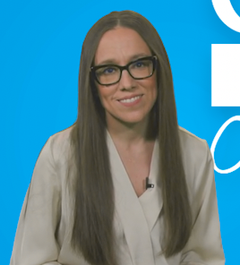
Multidisciplinary Care of Patients With CLL
Hoshiyuki Iida, APN, discusses his role in the multidisciplinary team in the treatment of patients with chronic lymphocytic leukemia.
Episodes in this series

Transcript:
Lori A. Leslie, MD: We’ve talked a lot about CLL [chronic lymphocytic leukemia]. Hoshi, why don’t you explain your role in our multidisciplinary team in terms of the education and care of patients with CLL?
Hoshiyuki Iida, APN: In our clinic, APNs [advanced practice nurses] have several different roles. In the front end, we do patient care. In the back end, we make sure that the plans set forth by the providers are being processed in a timely fashion. In our practice, the doctors share the patients with APNs. At these appointments, basically we are the doctors’ eyes and ears, and the voice of the patients. Whenever I see any blood work that’s irregular or abnormal, or if the patients mention anything that is outstanding, I will collaborate with Dr Leslie or the other providers. Then we may order additional laboratory tests, give supportive care, or make a change in treatment, according to whatever is presented. Along with these clinic hours, we are constantly in communication with our nurse navigators who are on the front line for answering phone calls and concerns from the patients and any troubleshooting. These nurse navigators are specialized in lymphoma. They have bedside experience and can answer a majority of the questions that may come up.
Lori A. Leslie, MD: Hoshi, I love how you explain how we take a team approach. We go into the room together usually, the first time. Maybe the provider will introduce the concept of treatment. What type of resources do we usually bring in for the patients if they want to then consolidate that education or read a little more at home? It’s easy to go on Google and find all sorts of inaccurate information. What are some of the things that we like to use?
Hoshiyuki Iida, APN: In a typical first consult follow-up with our patients, Dr Leslie will go over the pathology and the treatment plan, and I’ll be in the background with written materials, circling everything she’s going over. This is to have the patient be available and be an active listener, instead of a passive note taker. Then after you’re done, or any provider is done, I’ll go over the written material. It’s common for me to go over the same material because we’re feeding a lot of information at a stressful time. It is hard to take in at one time. Some patients are intimidated by the doctors and feel that their question may be silly to ask, so they’ll wait until [the doctors] are done, and they’ll ask me for additional answers.
Lori A. Leslie, MD: I agree with that completely. Sometimes they’re hearing for the first time that they’re going to need a treatment, and it’s overwhelming. All I say is, “We need to start therapy,” and then they zone out a bit. A lot of patients ask to have another visit with you, Hoshi, just to review and consolidate everything. The resources we use from the Leukemia & Lymphoma Society, CLL Society, and Lymphoma Research Foundation are things they bring back and want to discuss with us. That upfront discussion about adverse effects and what to anticipate helps our patients be empowered to know what to expect and be confident that they know when to call. It’s not just their doctors who are there for them, we’ve got a huge team of specialized APNs and nurse navigators to help triage whatever is going on. It’s important that we all have a role and the patients understand we’re a team, so we take care of them together. This is increasingly important because the treatment landscape of CLL has changed dramatically. I’m in my eighth year at Hackensack [University Medical Center], and even during this time, it is a completely different discussion. Since about 2014, we’ve shifted away from chemotherapy. Hoshi, when is the last time we’ve talked to someone about starting chemotherapy in CLL?
Hoshiyuki Iida, APN: Several years ago.
Lori A. Leslie, MD: Yes. I honestly don’t remember, which is great. We’ve shifted into this targeted therapy era. Whether you’re talking about the front line or relapsed/refractory, for the vast majority of patients in the current landscape, we are talking about a chemotherapy-free approach. We’ve got some approaches that are more long term, maybe just oral medications such as some BTK [Bruton tyrosine kinase] inhibitors. We’ve got other approaches that include oral treatment with an IV [intravenous tube] that’s maybe immune therapy. These nuances can be important to the patient when they’re helping us decide what type of treatment to do with them. I love that they have all these different team members available, where possibly they can feel more comfortable with one than another. We get to know them as a person and help personalize what we’re doing, not only based on their disease, but on who they are, what their values are, and what their concerns are about whatever treatment we’re talking about.
Transcript edited for clarity.






